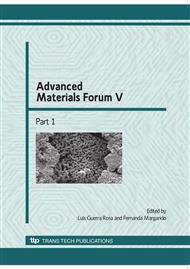p.1137
p.1143
p.1150
p.1157
p.1165
p.1172
p.1178
p.1186
p.1194
Laser Hardening of XC42 Steel: Numerical Analysis of Quenched Area
Abstract:
In contrast with conventional tools, laser processing allows hardening of a restricted zone while keeping the structural properties of the steel bulk. This last quality indicates that, in order to verify a laser hardening, only some specific information of the quenched area is required. The aim of this article is to analyse the reliability of finite element numerical simulation by comparing numerical and experimental outcomes. To do that, we define some magnitudes: the maximum width, the real depth of the laser penetration, the maximum hardness and the hardness versus depth profiles (Jominy’s curves). The tests show the good behaviour of the model and how this contributes important information to the choice of the laser parameters.
Info:
Periodical:
Pages:
1165-1171
Citation:
Online since:
January 2010
Authors:
Price:
Сopyright:
© 2010 Trans Tech Publications Ltd. All Rights Reserved
Share:
Citation:


